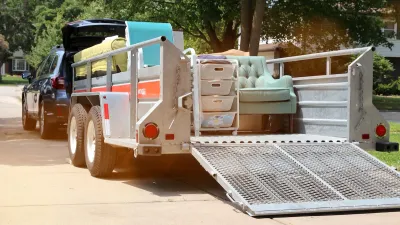The economic uncertainty of the pandemic has added to already declining birth rates in a troubling sign for the future of the American economy.

Writing in the New York Times, Melissa S. Kearney and Phillip B. Levine assess their earlier prediction that the COVID-19 pandemic will lead to a drastic decline in U.S. births which, coupled with an already declining birth rate, will cause "consequential changes to our economy and society in the years to come."
The authors predicted a dip of roughly 8% last year, using an analysis "based largely on the fact that economic factors affect people’s decisions about whether and when to have a baby" as well as demographic history from the 1918 flu pandemic. Although birth data affected by the COVID-19 pandemic won't be available for several more months, recent surveys indicate that "couples were intentionally putting their pregnancy plans on hold and having sex less often." Provisional data for January 2021 births (the first that would have been affected by lockdown measures) from Florida and California show a 7.2% and 10.5% decline, respectively.
It is impossible to anticipate all the possible social and psychological effects of this baby bust, but according to Kearney and Levine, "the real societal challenge of a Covid baby bust will be a smaller work force, which portends lower economic productivity and fewer workers to contribute to the tax base." With employment rates and productivity falling alongside birth rates, the authors argue, "turning things around will require a significant investment of public resources to improve our country’s economic competitiveness."
FULL STORY: We Expect 300,000 Fewer Births Than Usual This Year

Study: Maui’s Plan to Convert Vacation Rentals to Long-Term Housing Could Cause Nearly $1 Billion Economic Loss
The plan would reduce visitor accommodation by 25,% resulting in 1,900 jobs lost.

Alabama: Trump Terminates Settlements for Black Communities Harmed By Raw Sewage
Trump deemed the landmark civil rights agreement “illegal DEI and environmental justice policy.”

North Texas Transit Leaders Tout Benefits of TOD for Growing Region
At a summit focused on transit-oriented development, policymakers discussed how North Texas’ expanded light rail system can serve as a tool for economic growth.

San Diego County Sees a Rise in Urban Coyotes
San Diego County experiences a rise in urban coyotes, as sightings become prevalent throughout its urban neighbourhoods and surrounding areas.

Los Angeles County Invests in Wildfire Recovery for Parks, Trails, and Open Space
The $4.25 million RESTORE Program supports the recovery of parks, trails, and open spaces damaged by the January 2025 wildfires through targeted grants that promote community healing, wildfire resilience, and equitable access to nature.

Nevada Bills Aim to Establish Home Insurance Assurance Amidst Wildfire Risk
Republican sponsor hopes the FAIR plan would be “a true market of last resort.”
Urban Design for Planners 1: Software Tools
This six-course series explores essential urban design concepts using open source software and equips planners with the tools they need to participate fully in the urban design process.
Planning for Universal Design
Learn the tools for implementing Universal Design in planning regulations.
Alamo Area Metropolitan Planning Organization
City of Santa Clarita
Institute for Housing and Urban Development Studies (IHS)
City of Grandview
Harvard GSD Executive Education
Toledo-Lucas County Plan Commissions
Salt Lake City
NYU Wagner Graduate School of Public Service





























